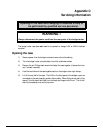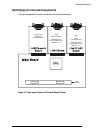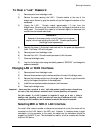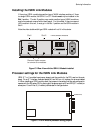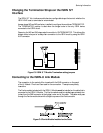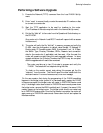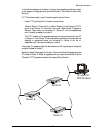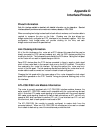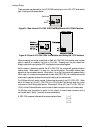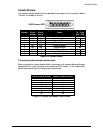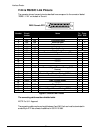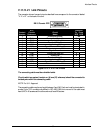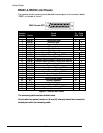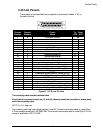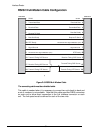
79
Appendix D
Interface Pinouts
Pinout Information
Each link interface available is described with detailed information on pin designation. Standard
interface cables will provide correct connections to modems, datasets, or DSU/CSUs.
When connecting two bridge/routers back-to-back without modems, a null-modem cable is
required to crossover the pins on the links. Crossing over the pins allows two
bridge/routers both configured as DTE interfaces to be connected together. With this
configuration, both bridge/routers will provide clocking for the links, and each
bridge/router must have a link speed defined.
Link Clocking Information
All of the link interfaces on the router act as DTE devices, this means that they may be
directly connected to DCE devices (modems, etc.) with the DCE devices providing the
clocking for the link. The link speed is controlled by the DCE device. Setting the link speed
on the router will not result in a speed change on the link.
Some DCE devices allow the DTE devices connected to them to supply a clock signal
which is then routed back to the transmit clock pins on the DCE interface. This clock is
then received by the router link interface. By using this method, the router may be in
control of the link speed. The link speed may also be controlled by the router when a null-
modem cable is used to connect two routers in a back-to-back configuration.
Changing the link speed within the menu system of the router changes the clock output
speed that is generated on the DTE Terminal Timing pins (external clocking pins) on the
link interfaces.
ATL-CSU/DSU Link Module Information
The router is currently produced with LXT CSU/DSU interface modules; however, the
earlier model ATL CSU/DSU module is still compatible with the router and may be used
with it. Note that ATL master mode signaling is not compatible with the current standard
64K master mode signaling; therefore, for back to back connections, an ATL unit will only
operate at 64K when connected to another ATL unit. If one interface is an ATL unit and
the other is not, back to back operation must be set to 56K.
The ATL-CSU/DSU link module is normally configured to receive clock from the
connected network. When two ATL-CSU/DSU link modules are to be used on a leased
line in a back-to-back set-up, one of the modules must provide the clock.



